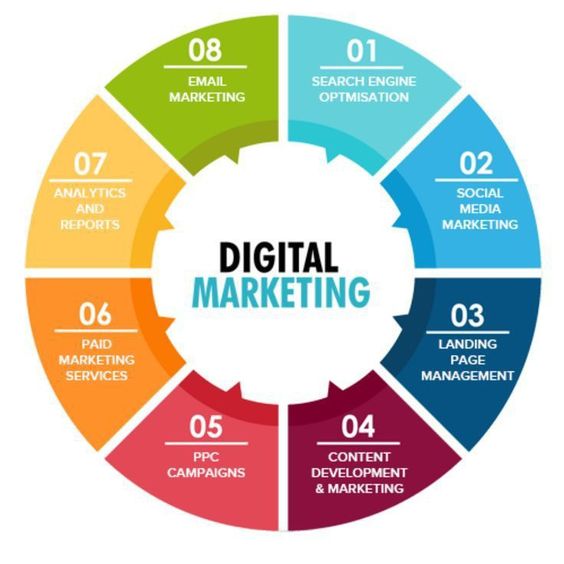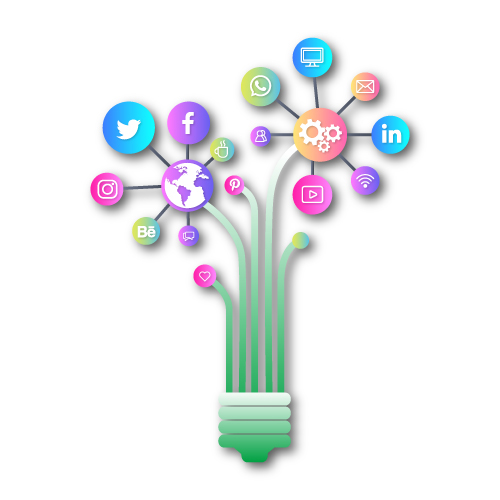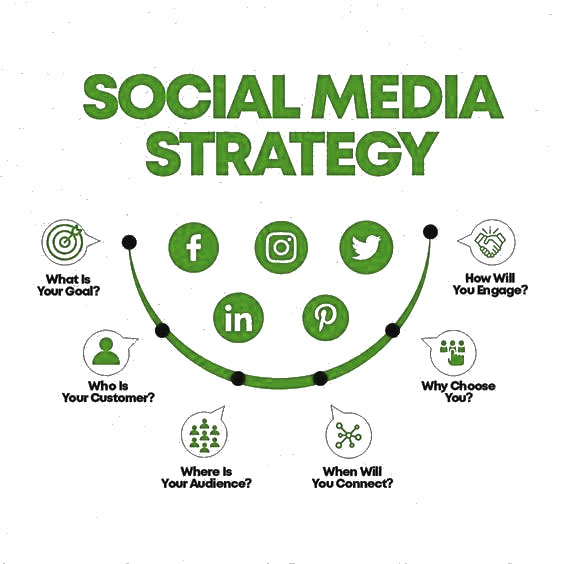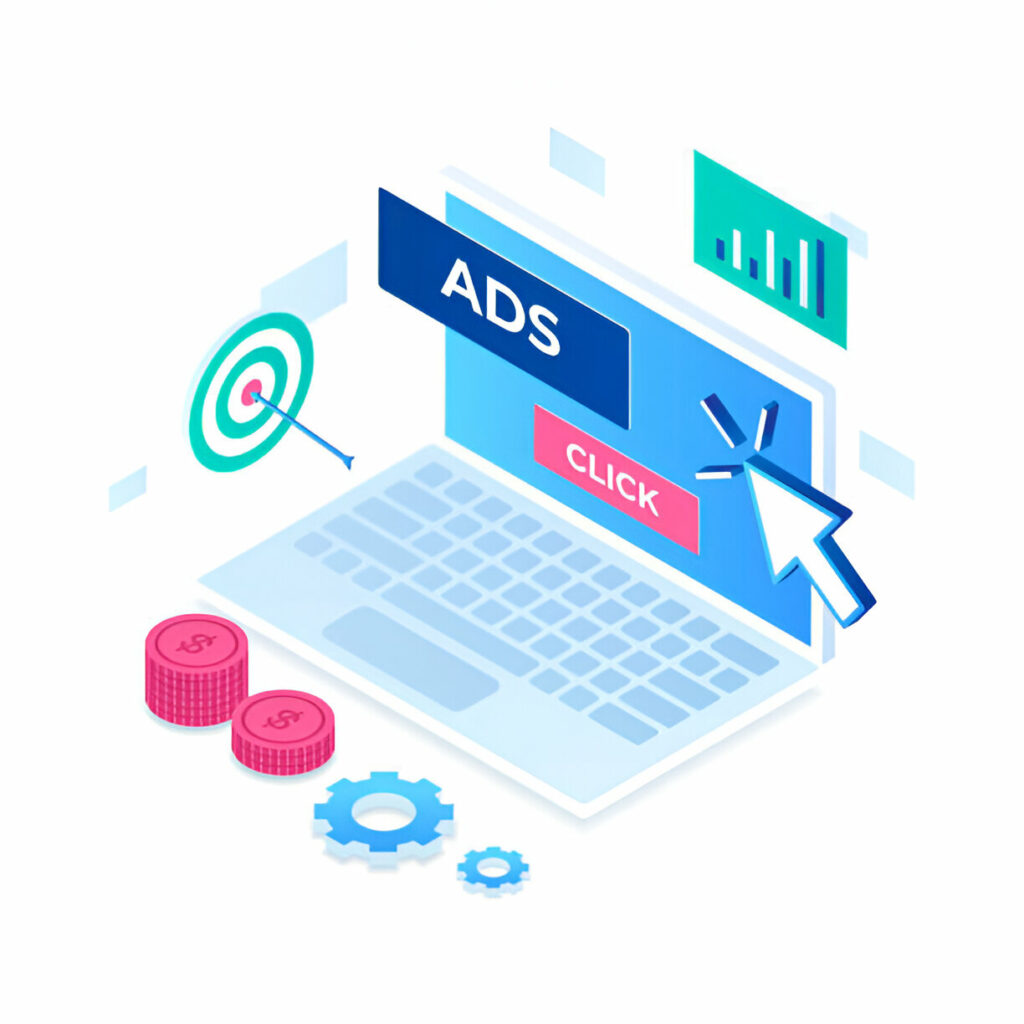Digital Marketing
Your Digital Success, Our Commitment

What is Digital Marketing ?
Digital marketing is the practice of promoting products, services, and Brands through online channels and digital technologies. It leverages the internet, mobile devices, social media, search engines, and other digital platforms to connect with consumers. Key components of digital marketing include Search Engine Optimization (SEO), Content Marketing, Social Media Marketing, Email Marketing, Pay-Per-Click (PPC) Advertising, Affiliate Marketing, Influencer Marketing, and Video Marketing. Unlike traditional marketing, digital marketing allows for precise targeting, real-time engagement, and detailed performance measurement. It offers businesses the ability to reach a global audience, optimize their marketing strategies, and achieve higher returns on investment. By utilizing various digital channels and data-driven insights, digital marketing helps businesses build strong relationships with their audience, increase brand visibility, and drive sustainable growth in the digital age.
We help you find your targeted page at the top whenever an audience searches for your business-related topics.

The Benefits of Digital Marketing
Global Reach: Digital marketing allows businesses to reach a wide audience across the globe, breaking geographical barriers.
Cost-Effective: It is often more affordable than traditional marketing, offering a higher return on investment (ROI).
Targeted Marketing: With digital marketing, businesses can target specific demographics, interests, and behaviors, ensuring their message reaches the right people.
Measurable Results: Digital marketing tools provide detailed analytics, allowing businesses to track the performance of their campaigns in real-time.
Enhanced Engagement: It offers multiple ways to engage with the audience, from social media interactions to personalized email campaigns, fostering stronger customer relationships.

Types of Digital Marketing
Digital marketing includes various strategies such as Search Engine Optimization (SEO), content marketing, social media marketing, email marketing, Pay-Per-Click (PPC) advertising, affiliate marketing, influencer marketing, and video marketing. Each type targets different aspects of online engagement and audience interaction to drive business growth.
Search Engine Optimization (SEO)
Search Engine Optimization (SEO) is the process of optimizing a website to improve its visibility and ranking on search engine results pages (SERPs). The goal of SEO is to attract more organic (non-paid) traffic to a website by making it more appealing to search engines and users.
On-Page SEO
On-Page SEO involves optimizing individual web pages to improve their search engine rankings and attract more relevant traffic. Key elements include using targeted keywords in titles, meta descriptions, headers, and content, ensuring high-quality and relevant content, optimizing images with alt tags, and improving internal linking. Additionally, on-page SEO focuses on enhancing user experience by ensuring fast page load times, mobile-friendliness, and a clear site structure. Effective on-page SEO helps search engines understand the content of a page, making it easier to rank higher in search results and attract organic traffic.
Off-Page SEO
Off-Page SEO refers to actions taken outside of a website to improve its search engine rankings. This primarily involves building high-quality backlinks from reputable and relevant websites, signaling to search engines that your site is authoritative and trustworthy. Other off-page SEO tactics include social media engagement, influencer outreach, and guest blogging. The goal is to increase the website’s authority, relevance, and popularity in the eyes of search engines, ultimately improving its ranking position on search engine results pages (SERPs). Off-page SEO complements on-page SEO efforts and is essential for building a strong online presence and attracting organic traffic.
Technical SEO
Technical SEO focuses on optimizing the technical aspects of a website to improve its search engine visibility and performance. Key elements include optimizing site speed, ensuring mobile-friendliness, improving website architecture and navigation, implementing HTTPS encryption, creating an XML sitemap, and fixing crawl errors. Technical SEO also involves optimizing meta tags, headers, and structured data to make it easier for search engines to crawl and index the site’s content. By addressing technical issues and providing a seamless user experience, technical SEO helps websites rank higher in search engine results pages (SERPs) and attract more organic traffic.
Content SEO
Content SEO involves optimizing website content to improve its visibility and relevance in search engine results. Key tactics include conducting keyword research to identify relevant terms, strategically incorporating keywords into titles, headers, and body content, and ensuring content is valuable, informative, and engaging. Content SEO also involves optimizing images with descriptive alt tags, using internal linking to connect related content, and updating content regularly to maintain relevance. By focusing on creating high-quality, keyword-optimized content, businesses can attract more organic traffic, enhance user experience, and improve their search engine rankings.
Local SEO
Local SEO focuses on optimizing a website to appear in local search results, particularly for users searching for products or services in a specific geographic area. Key tactics include creating and optimizing Google My Business listings, ensuring consistent NAP (Name, Address, Phone Number) information across online directories, generating positive customer reviews, and targeting local keywords. Local SEO also involves optimizing website content with location-specific keywords and creating location pages for multiple business locations. By prioritizing local search optimization, businesses can attract more local customers, increase foot traffic, and improve their visibility in local search results.
Social Media Marketing
Social media marketing (SMM) is the practice of using social media platforms to connect with your audience to build your brand, increase sales, and drive website traffic. This involves creating and sharing content on social media networks such as Facebook, Instagram, Twitter, LinkedIn, Pinterest, and TikTok, to engage with your followers and target audience.

Key components of Social Media Marketing include
Platform Selection: Choosing the right social media platforms based on your target audience, industry, and business goals.
Content Creation: Creating high-quality, engaging content such as posts, images, videos, stories, and infographics that resonate with your audience and align with your brand.
Community Engagement: Interacting with your followers by responding to comments, messages, and mentions, fostering meaningful conversations, and building relationships.
Paid Advertising: Running targeted ad campaigns on social media platforms to reach a larger audience, increase brand awareness, and drive conversions.
Influencer Partnerships: Collaborating with influencers who have a significant following in your niche to promote your products or services to their audience.
Analytics and Insights: Monitoring and analyzing social media metrics such as reach, engagement, click-through rates, and conversions to measure the performance of your campaigns and make data-driven decisions.

Social Media Marketing offers numerous benefits, including
Increased Brand Awareness: Social media platforms allow you to reach a large audience and increase brand visibility through content sharing and engagement.
Targeted Advertising: Social media advertising enables precise targeting based on demographics, interests, behaviors, and location, ensuring your message reaches the right people.
Customer Engagement and Loyalty: Social media provides a direct channel for communicating with your audience, building relationships, and fostering brand loyalty through personalized interactions.
Drive Website Traffic and Conversions: Social media marketing can drive traffic to your website, blog, or landing pages, leading to increased conversions and sales.
Market Insights: Social media platforms provide valuable insights into your audience’s preferences, interests, and behaviors, helping you refine your marketing strategies and improve campaign effectiveness.
Overall, social media marketing is a powerful tool for businesses to connect with their audience, build brand awareness, and drive meaningful engagement and conversions in today’s digital landscape.

Key components of Social Media Marketing include
Platform Selection: Choosing the right social media platforms based on your target audience, industry, and business goals.
Content Creation: Creating high-quality, engaging content such as posts, images, videos, stories, and infographics that resonate with your audience and align with your brand.
Community Engagement: Interacting with your followers by responding to comments, messages, and mentions, fostering meaningful conversations, and building relationships.
Paid Advertising: Running targeted ad campaigns on social media platforms to reach a larger audience, increase brand awareness, and drive conversions.

Content Marketing
Content marketing is a strategic marketing approach focused on creating and distributing valuable, relevant, and consistent content to attract and retain a clearly defined audience. The goal is to engage with the target audience, build brand awareness, establish authority in the industry, and ultimately drive profitable customer action.
Key components of content marketing include understanding the target audience’s needs and interests, creating high-quality and informative content, and distributing it through various channels such as blogs, social media, email newsletters, and podcasts.
Content marketing encompasses a wide range of content formats, including blog posts, articles, videos, infographics, e-books, whitepapers, case studies, and webinars. The content is tailored to address the audience’s pain points, answer their questions, and provide valuable insights or solutions.
Effective content marketing not only attracts attention but also builds trust and credibility with the audience over time. By consistently delivering valuable content, businesses can establish themselves as thought leaders in their industry and nurture long-term relationships with customers. Content marketing is an essential strategy for businesses looking to drive organic traffic, generate leads, and ultimately, achieve sustainable growth in today’s competitive digital landscape.
Pay-Per-Click (PPC) advertising
Pay-Per-Click (PPC) advertising is a digital marketing model where advertisers pay a fee each time their ad is clicked. It’s a way of buying visits to your site rather than attempting to “earn” those visits organically. PPC ads appear alongside search results on search engines like Google, as well as on social media platforms like Facebook, Instagram, and LinkedIn.
Key components of PPC advertising include keyword research, ad creation, bidding on keywords, and optimizing ad campaigns for maximum ROI. Advertisers bid on specific keywords relevant to their target audience, and their ads are displayed to users who search for those keywords or visit websites related to them. The cost of each click depends on the competitiveness of the keyword and the quality of the ad.
PPC advertising offers several benefits, including immediate visibility, precise targeting options based on demographics, interests, and behaviors, and the ability to track and measure campaign performance in real-time. It’s a highly effective way to drive targeted traffic to your website, increase conversions, and achieve your marketing goals efficiently. With proper strategy and optimization, PPC advertising can deliver a high return on investment (ROI) for businesses of all sizes.


How to do digital marketing
To execute digital marketing effectively, start by defining your goals and target audience. Research your audience’s demographics, interests, and behaviors to tailor your strategies accordingly. Select the most suitable digital marketing channels, such as social media, email, content marketing, SEO, and PPC advertising, based on your audience and objectives. Create high-quality, engaging content that provides value to your audience and reflects your brand identity. Optimize your website for search engines to increase visibility and attract organic traffic. Engage with your audience on social media platforms, respond to comments and messages, and build relationships. Invest in paid advertising to reach a wider audience and drive targeted traffic. Analyze your campaign performance using analytics tools and adjust your strategies accordingly to optimize results. By following these steps and continuously adapting to changes in the digital landscape, you can effectively leverage digital marketing to achieve your business goals and drive growth.